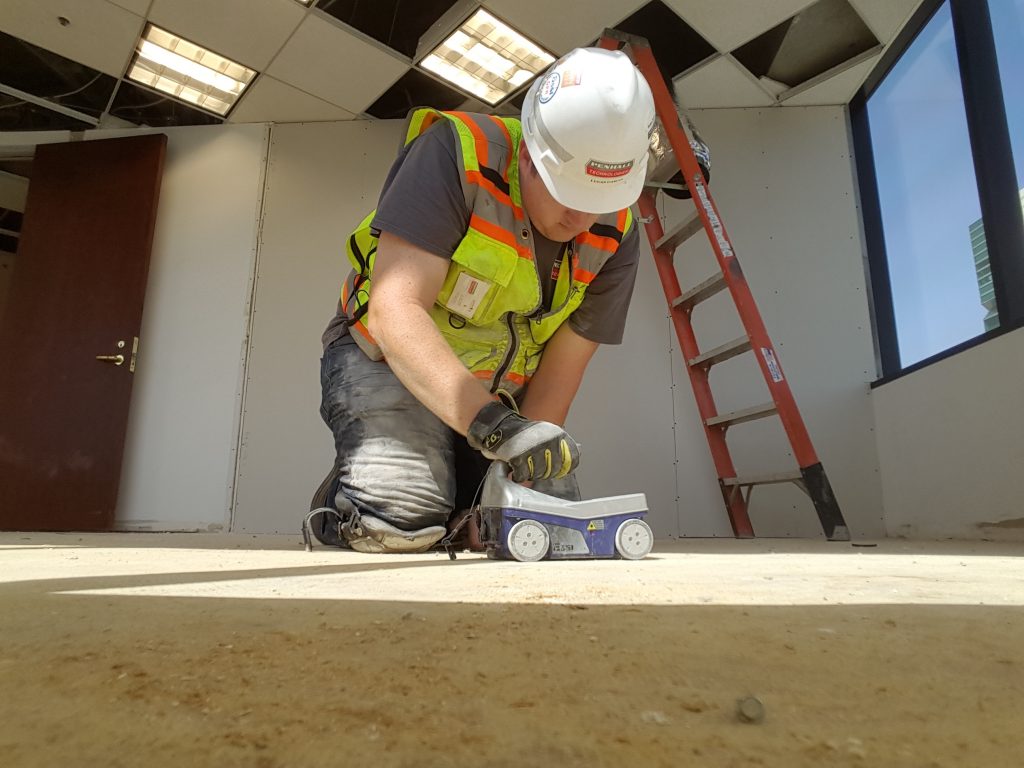Key Benefits of Making Use Of Concrete Scanning Technology
Past the Surface Area: Leveraging Advanced Concrete Scanning Techniques for Unmatched Accuracy and Understanding
Advanced concrete scanning strategies have arised as essential devices in this pursuit, supplying a look below the surface to reveal a globe of critical understandings. By harnessing advanced modern technologies, professionals can uncover anomalies, evaluate the problem of concrete structures, and make educated decisions that form the training course of tasks.
Significance of Advanced Concrete Scanning
The importance of using sophisticated concrete scanning methods hinges on the unmatched accuracy they use for finding sub-surface anomalies and guaranteeing structural honesty. By using cutting-edge technologies such as ground-penetrating radar (GPR), electromagnetic induction, and progressed finder imaging, building and construction experts can dive beneath the surface area of concrete frameworks with a degree of accuracy that far surpasses standard examination techniques. Concrete Scanning. These methods allow the identification of concealed hazards like rebar deterioration, spaces, conduits, or post-tension cords that might endanger the stability and security of a framework gradually
Additionally, advanced concrete scanning supplies vital insights right into the overall condition of a concrete aspect without the demand for invasive measures, lessening the risk of creating damages throughout the assessment procedure. The ability to identify the exact location and deepness of prospective concerns enables targeted repair services and upkeep, inevitably extending the lifespan of the structure and maximizing its efficiency. Fundamentally, the value of innovative concrete scanning can not be overstated in the world of building and construction and infrastructure upkeep, where accuracy and dependability are extremely important.
Sorts Of Cutting-Edge Technologies

Abnormalities and Flaw Discovery

In addition to GPR, concrete scanning strategies like thermography and impact-echo testing are also reliable in finding abnormalities and defects. By leveraging these sophisticated techniques, professionals can proactively attend to architectural concerns, ensuring the long life and safety of concrete frameworks.
Assessing Concrete Condition
How can engineers properly assess the condition of concrete structures to ensure their longevity and security? Evaluating the concrete condition is a vital facet of preserving framework stability. Various advanced concrete scanning strategies are used for this objective. Ground-penetrating radar (GPR) is frequently utilized to analyze the internal framework of concrete, finding spaces, splits, and other anomalies that might jeopardize its strength. Furthermore, impact-echo testing can provide insights check out here right into the thickness and stability of concrete aspects. Ultrasonic pulse speed screening is one more useful method for examining concrete quality by measuring the speed of acoustic waves via the material.
Moreover, visual assessment continues to be a basic component of concrete condition evaluation. Designers aesthetically examine the surface area for indicators look at this web-site of damage, such as spalling, splitting, or discoloration. Integrating non-destructive screening methods with visual examinations permits for a detailed analysis of concrete condition, making it possible for engineers to determine prospective issues early and execute prompt upkeep or repairs. By leveraging these sophisticated methods, designers can ensure the lasting toughness and safety of concrete structures.
Enhancing Decision-Making Processes
In the world of infrastructure administration, maximizing decision-making processes is critical for making certain the effective maintenance and long life of concrete frameworks. Boosted decision-making procedures in concrete administration involve making use of innovative scanning strategies to gather comprehensive information on the problem of frameworks. By leveraging modern technologies such as ground-penetrating radar and 3D imaging, stakeholders can make educated decisions relating to replacement, repair service, or support methods.
These advanced scanning strategies offer important insights into the internal structure of concrete, determining potential problems such as gaps, splits, or deterioration that might not show up on the surface area. This level of comprehensive information permits positive maintenance preparation, minimizing the risk of architectural failings and increasing the general life-span of concrete frameworks.
Furthermore, by integrating electronic documents and evaluation tools right into the decision-making procedure, stakeholders can track the development of concrete problems in time, allowing predictive upkeep methods and enhancing resource allotment. Eventually, the combination of sophisticated concrete scanning methods improves decision-making procedures by supplying unparalleled accuracy, insight, and effectiveness in framework monitoring.
Verdict
To conclude, progressed concrete scanning methods provide unparalleled accuracy and insight in identifying abnormalities, issues, and analyzing the problem of concrete frameworks. By leveraging advanced modern technologies, decision-making processes can be boosted, resulting in even more reliable and enlightened services for maintaining and repairing concrete infrastructure. These strategies play an important function in making certain the safety and security and long life of concrete frameworks, making them a crucial device in the area of building and construction and design.
In addition, advanced concrete scanning gives important insights right into the overall condition of a concrete aspect without the demand for intrusive steps, lessening the risk of creating damages throughout the assessment procedure - Concrete Scanning. Another innovative innovation is 3D X-ray scanning, which gives detailed pictures of the interior framework of concrete, offering useful information without the requirement for devastating testing. Furthermore, Concrete Cover Meters are used to determine the density of concrete cover over support bars precisely. Enhanced decision-making see page procedures in concrete administration involve using sophisticated scanning methods to collect in-depth data on the condition of structures.In conclusion, advanced concrete scanning strategies provide unparalleled precision and understanding in identifying abnormalities, problems, and analyzing the condition of concrete structures